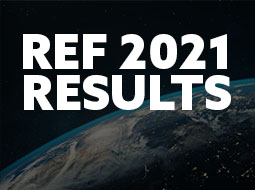-
Study
-
Quick Links
- Open Days & Events
- Real-World Learning
- Unlock Your Potential
- Tuition Fees, Funding & Scholarships
- Real World Learning
-
Undergraduate
- Application Guides
- UCAS Exhibitions
- Extended Degrees
- School & College Outreach
- Information for Parents
-
Postgraduate
- Application Guide
- Postgraduate Research Degrees
- Flexible Learning
- Change Direction
- Register your Interest
-
Student Life
- Students' Union
- The Hub - Student Blog
- Accommodation
- Northumbria Sport
- Support for Students
-
Learning Experience
- Real-World Learning
- Research-enriched learning
- Graduate Futures
- The Business Clinic
- Study Abroad
-
-
International
International
Northumbria’s global footprint touches every continent across the world, through our global partnerships across 17 institutions in 10 countries, to our 277,000 strong alumni community and 150 recruitment partners – we prepare our students for the challenges of tomorrow. Discover more about how to join Northumbria’s global family or our partnerships.
View our Global Footprint-
Quick Links
- Course Search
- Undergraduate Study
- Postgraduate Study
- Information for Parents
- London Campus
- Northumbria Pathway
- Cost of Living
- Sign up for Information
-
International Students
- Information for International Students
- Northumbria and your Country
- International Events
- Application Guide
- Entry Requirements and Education Country Agents
- Global Offices and Regional Teams
- English Requirements
- English Language Centre
- International student support
- Cost of Living
-
International Fees and Funding
- International Undergraduate Fees
- International Undergraduate Funding
- International Masters Fees
- International Masters Funding
- International Postgraduate Research Fees
- International Postgraduate Research Funding
- Useful Financial Information
-
International Partners
- Agent and Representatives Network
- Global Partnerships
- Global Community
-
International Mobility
- Study Abroad
- Information for Incoming Exchange Students
-
-
Business
Business
The world is changing faster than ever before. The future is there to be won by organisations who find ways to turn today's possibilities into tomorrows competitive edge. In a connected world, collaboration can be the key to success.
More on our Business Services-
Business Quick Links
- Contact Us
- Business Events
- Research and Consultancy
- Education and Training
- Workforce Development Courses
- Join our mailing list
-
Education and Training
- Higher and Degree Apprenticeships
- Continuing Professional Development
- Apprenticeship Fees & Funding
- Apprenticeship FAQs
- How to Develop an Apprentice
- Apprenticeship Vacancies
- Enquire Now
-
Research and Consultancy
- Space
- Energy
- AI and Tech
- CHASE: Centre for Health and Social Equity
- NESST
-
-
Research
Research
Northumbria is a research-rich, business-focused, professional university with a global reputation for academic quality. We conduct ground-breaking research that is responsive to the science & technology, health & well being, economic and social and arts & cultural needs for the communities
Discover more about our Research-
Quick Links
- Research Peaks of Excellence
- Academic Departments
- Research Staff
- Postgraduate Research Studentships
- Research Events
-
Research at Northumbria
- Interdisciplinary Research Themes
- Research Impact
- REF
- Partners and Collaborators
-
Support for Researchers
- Research and Innovation Services Staff
- Researcher Development and Training
- Ethics, Integrity, and Trusted Research
- University Library
- Vice Chancellors Fellows
-
Research Degrees
- Postgraduate Research Overview
- Doctoral Training Partnerships and Centres
- Academic Departments
-
Research Culture
- Research Culture
- Research Culture Action Plan
- Concordats and Commitments
-
-
About Us
-
About Northumbria
- Our Strategy
- Our Staff
- Our Schools
- Place and Partnerships
- Leadership & Governance
- University Services
- Northumbria History
- Contact us
- Online Shop
-
-
Alumni
Alumni
Northumbria University is renowned for the calibre of its business-ready graduates. Our alumni network has over 253,000 graduates based in 178 countries worldwide in a range of sectors, our alumni are making a real impact on the world.
Our Alumni - Work For Us
Editors: Ozge Dilaver, Wenying Fu, Elvira Uyarra, Charlotte Yang and Pete Tyler
From the UK’s urban growth coalitions to China’s new-type urbanisation and the EU’s integrated urban strategies, cities serve as the focal point where urban agglomeration is expected to drive economic growth and technological progress. The literature on spatial economic agglomeration in cities is well established (Jacobs, 1969; Glaeser and Gottlieb, 2009; Gardiner et al., 2011; McCann and Van Oort, 2019), offering well-developed theories on how proximity and knowledge spillovers fosters economic activity, often through retrospective analyses of highly productive urban areas. While a growing body of literature suggests concentrated urban growth may lead to spatial inequalities (Storper, 2018; Lee, 2019; Kemeny et al., 2022), these insights are not yet fully integrated in theories of urban agglomeration, and are overlooked in policy discourse. Contemporary contexts of escalating economic inequalities, political polarisation, recurring financial crises and the climate emergency constitute a critical juncture that requires more nuanced and balanced understandings of urban agglomeration by taking its distributional effects into consideration. Emerging contexts of digital transformation and new patterns of work, furthermore, impact upon lived experiences of proximity (Liu and Su, 2023; Behrens et al., 2024), necessitating further research on spatial patterns that digitalisation brings about, as well as its implications related to digital inequalities.
Regarding dynamics between cities, while we know cities compete for positions in global production networks and to attract investment and skilled workers, and so, agglomeration benefits in some areas occur at the expense of others (Dilaver et al., 2015; Rodríguez-Pose, 2018), these constant-sum and past-dependent dynamics are not yet sufficiently integrated into agglomeration discourse and are overlooked in density-based growth policies. Even though we understand the role of states’ spatial strategies, long-term structural transformations and multi-scalar rule regimes in shaping urban agglomerations (Martin, 1999; Tyler et al., 2017; Gray and Barford, 2018; Mackinnon, 2021; Hassink and Yang, 2021), more research is needed to clarify the interdependencies between the policy enthusiasm for agglomeration and greater expected returns on public investment in big cities on one hand, and underinvestment in other places and consequent productivity loss on the other.
Regarding dynamics within cities, existing theories on urban agglomeration tend to homogenise people when assuming knowledge spillovers occur naturally with geographical proximity. Yet, we know that urban realities are complex, often fraught with social boundaries, spatial segregations, class struggles, and perpetuating socio-economic inequalities (Perrons, 2004; Fu, 2023). Not only agglomeration can lead to negative externalities, such as congestion, housing crises and environmental degradation (Thissen and van Oort, 2010) but also these externalities are experienced more strongly by marginalised groups and communities (Haughton et al, 2016). In these regards, there is an urgent need to examine the potential of urban agglomeration to reshape economic and social landscapes, and in turn, the varied ways individuals and communities engage with these changes through grassroots practices like frugal and social innovation (Graddy-Reed and Feldman, 2015; Qian et al., 2021; Barnikol and Liefner, 2022).
This special issue aims to address these gaps and build a broader and more complete picture of urban agglomeration. By re-examining the agglomeration dynamics and mechanisms that have distributional effects, the issue aims to contribute to the inclusivity dimension of scholarly and policy debates on density-driven development. We invite contributions that examine urban agglomeration from diverse vantage points, assess both positive and negative impacts and seek to shed light on who is likely to gain/lose and how more inclusive outcomes may be generated through agglomeration and density-based urban policies. We are particularly interested in understanding:
What are the causes and mechanisms behind the distributional effects of urban agglomeration? How do these causalities of distribution relate to well-studied productivity gains of urban agglomeration?
Which market-based, self-reinforcing factors and socio-politically driven processes initiate and/or accelerate urban agglomeration (dis)economies?
How do the benefits from urban agglomeration translate into impacts on the wider city region of which they are a part and who are the beneficiaries?
How can we theorise and operationalise agglomeration economies to address contemporary challenges like recurrent crises, climate emergency and digital inequalities? What scales and scopes of the ‘urban’ are most appropriate for this analysis?
Which groups, places and economic processes are in/excluded in existing urban agglomeration discourses? What are the impacts of urban agglomeration on the lives and livelihoods of different groups including those who are less well off in urban and surrounding areas?
How does urban agglomeration shape diverse forms of innovation—not only technological innovation within large corporations, but also grassroots practices such as frugal and social innovation—as small businesses, individuals and communities navigate concentrated urban growth?
Submissions
Authors interested in publishing in the Special Issue should email an Abstract proposal of about 400 words to the CJRES Editorial Office (cjreseditorial@gmail.com) by 1st February 2026, and full Papers invited from among those submissions will need to be received by 1st August 2026 for review and possible publication in the November 2027 issue.
Submissions will be subject to the journal’s standard peer review process. Details of Cambridge Journal of Regions, Economy and Society’s publication process, evaluation criteria, and house style are available at https://academic.oup.com/cjres/pages/General_Instructions.
Conference
Urban Agglomeration and its Distributional Effects will be one of the theme topics of the 2026 CJRES annual conference. We would encourage all those submitting abstracts for the journal to also submit abstracts for the conference, and to attend if possible.
The 2026 annual CJRES conference will be held on the 16th and 17th July 2026 at St Catharine’s College, Cambridge.
References:
Barnikol, J., and Liefner, I. 2022. The prospects of advanced frugal innovations in different economies. Technology in Society, 71: 102081.
Behrens, K., Kichko, S., Thisse, J-F. 2024. Working from home: Too much of a good thing? Regional Science and Urban Economics, 105: 103990.
Dilaver, Ö., Bleda, M. and Uyarra, E. 2014. Entrepreneurship and the emergence of industrial clusters. Complexity, 19: 14-29.
Fu W. 2023. Entrepreneurship and Innovation: Who is forgotten? In: Johns J and Hall SM, ed. Contemporary Economic Geographies: Inspiring, Critical and Plural Perspective. Bristol: Bristol University Press, p. 164-176.
Gardiner, B., Martin, R., Tyler, P. 2011. Does spatial agglomeration increase national growth? Some evidence from Europe. Journal of Economic Geography, 11(6): 979-1006.
Glaeser, E.L., Gottlieb, J.D. 2009. The Wealth of Cities: Agglomeration Economies and Spatial Equilibrium in the United States. Journal of Economic Literature, 47(4): 983-1028.
Graddy-Reed, A., and Feldman, M.P. 2015. Stepping up: an empirical analysis of the role of social innovation in response to an economic recession. Cambridge Journal of Regions, Economy and Society, 8(2): 293-312.
Gray, M., and Barford, A., 2018. The depths of the cuts: the uneven geography of local government austerity. Cambridge Journal of Regions Economy and Society, 11(3): 541-563.
Hassink, R., Yang, C., 2021. Guest Editorial: Creative industries at the intersection between local agglomeration, national regulation, and global networks. Tijdschrift voor Economische en Sociale Geografie, 112(3): 217-219.
Haughton, G., Deas, I., Hincks, S., Ward, K. 2016. Mythic Manchester: Devo Manc, the northern powerhouse and rebalancing the English economy. Cambridge Journal of Regions, Economy and Society, 9(2): 355-370.
Jacobs, J. 1969. The economy of cities. Vintage, New York.
Kemeny, T., Petralia, S., and Storper, M. 2022. Disruptive innovation and spatial inequality, Regional Studies, https://doi.org/10.1080/00343404.2022.2076824
Lee, N. 2019 Inclusive Growth in cities: a sympathetic critique, Regional Studies, 53(3): 424-34.
Liu, S., Su, Y., 2023. The effect of working from home on the agglomeration economies of cities: evidence from advertised wages. Available at SSRN 4109630.
MacKinnon, D. 2021. Governing uneven development: the Northern Powerhouse as a ‘state spatial strategy’. 9(5): 613-635.
Martin, R. 1999. The new 'geographical turn' in economics: some critical reflections. Cambridge Journal of Economics, 23(1): 65-91.
McCann, P., Van Oort, F. 2019. Theories of agglomeration and regional economic growth: A historical review. In Handbook of Regional Growth and Development Theories, pp. 6–23. Edward Elgar Publishing .
Perrons, D. 2004. Understanding Social and Spatial Divisions in the New Economy: New Media Clusters and the Digital Divide. Economic Geography, 80(1): 45-61.
Qian, J., Lyu, Z., and Guo, J. 2021. Making a grassroots knowledge economy: Cultural economies and communities of practice in the shanzhai electronics industry. Geoforum, 125: 66-77.
Rodríguez-Pose, A. 2018. The revenge of the places that don’t matter (and what to do about it), Cambridge Journal of Regions, Economy and Society, (1): 189–209.
Storper, M. 2018. Separate Worlds? Explaining the current wave of regional economic polarization, Journal of Economic Geography, 18(2): 247-270.
Thissen, M., and van Oort, F. 2010. European place‐based development policy and sustainable economic agglomeration. Tijdschrift voor economische en sociale geografie, 101(4): 473-480.
Tyler, P., Evenhuis, E., Martin, R., Sunley, P., Gardiner, B. 2017. Growing apart? Structural transformation and the uneven development of British cities. Cambridge Journal of Regions, Economy and Society, 10(3): 425-454.
EPIC Research Centre
- New Research To Support Rural Business Policy
- Community Enterprise incubation and acceleration in Pacific Colombia
- Institute for Small Business and Entrepreneurship (ISBE) Conference
- CJRES Special Issue
- 23rd Rural Entrepreneurship Conference: Call for Papers
- EPIC members take major roles in ISBE and RSA
- IJGE Special Issue
- Research Briefing: Supporting Outdoor Businesses
- New PhD Opportunities
- EPIC publications in 2025
- EPIC Seminar Series and Research Events, 2025
- Research Centre Members
Latest News and Features

Students gain invaluable work experience
Students from Northumbria University Business Clinic have gained invaluable work experience…

International students at Northumbria embark on FA Cup dream
A team of international college students studying at Northumbria University could soon find…

Students build foundations for Aptus expansion
A North East construction firm is targeting expansion after completing a marketing project…

The AI Education Revolution: Why Good Intentions Aren't Enough
Picture this: You're a teacher trying to navigate the brave new world of AI in education.

The Academy of Social Sciences welcomes Northumbria Professor to its Fellowship
An economics expert from Northumbria University, whose research has highlighted the important…

Jim Jackson Foundation extends its support to Northumbria University Business students
Northumbria University has extended its partnership with the Jim Jackson Educational and Enabling…

Elite basketball players celebrate graduation
Northumbria University, Newcastle, is proud to celebrate the achievements of the third cohort…

Northumbria expands results day support for students
Northumbria University is expanding and enhancing the support it provides to students receiving…
Upcoming events

Collaborating for Capability: Shaping the Future of Supply Chain Talent
City Campus East, Northumbria University CCE1-403
-

Commercialising SHAPE Innovations and Impact
Northumbria University
-

A Question of Self-Defence - The Women who kill men who abuse them
Lecture Theatre 003
-


